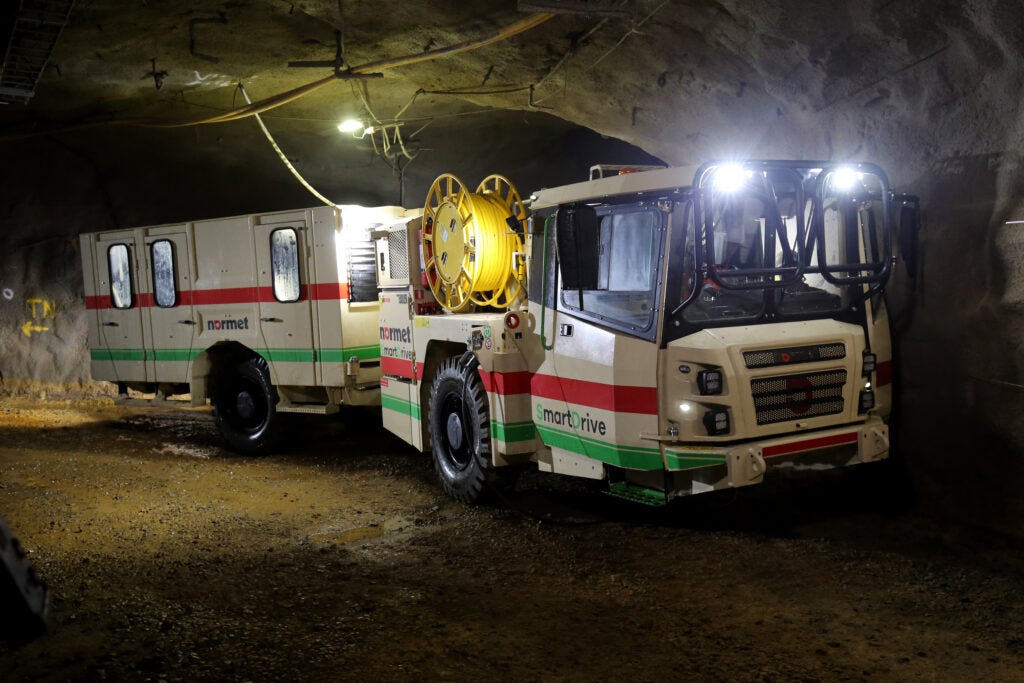
Clean energy needs a diet of sustainably sourced minerals. Yet whilst the climate crisis is stimulating an increasing appetite for renewables, the mining industry remains dominated by fossil fuels. Reaching net zero requires an integrated approach to efficiency improvements underpinned by the “kaizen” ethos of continuous incremental improvements, driven by innovative technological solutions.
As the world teeters on the edge of collapsing into a catastrophic climate-crisis, the call for sustainability adopts an increasingly ominous tone. A recent investigation highlighted the looming danger of failing to break humanity’s addiction to fossil fuels, echoing stark warnings from the latest report by the Intergovernmental Panel on Climate Change (IPCC). Jim Skea, Co-Chair of the IPCC Working Group III, said that “without immediate and deep emissions reductions across all sectors”, limiting global warming to 1.5°C (2.7°F) will be “impossible”.
Transition minerals
Widespread electrification is thought to be a crucial factor in providing clean transportation and power. Mining is already pivoting to meet a substantial increase in demand for key energy transition minerals.
According to a Mining Technology analysis of data from GlobalData’s commodity analyser database, lithium, cobalt, and graphite mining has shown strong growth in recent years.
An IEA report shows why such minerals are increasingly important for battery technologies and renewable power networks. Beyond the obvious prevalence of lithium-ion batteries already driving demand, solar panels require crystalline silicon produced from quartz, and varying amounts of copper depending on use case. For example, according to the IEA, “distributed solar PV systems” require approximately “40% more copper than utility scale projects”.
Copper is also one of the “two main materials in wires and cables” and thought to be crucial, alongside alternatives like aluminium, to facilitating the “huge expansion of electricity grids”.
Emissions and fuels
Yet as global mining operations to unearth key commodities rapidly grow in number and scale, all stakeholders are faced with the twin challenge of reducing fossil fuel dependency and the emissions caused by mineral extraction and processing.
An exclusive analysis by Mining Technology of GlobalData’s mining emissions data suggests that, despite an uptick in mining electrification, the sector remains reliant on fossil fuels, and most of the electricity used since 2016 still comes from non-renewable sources.
Reliance on non-renewable energy sources necessarily increases the mining industry’s carbon footprint and makes any significant reduction in emissions challenging. Our analysis shows how the picture is changing for the worse as non-renewable fuel use has been increasing since 2016.
Mining operations remain bedevilled by scope 3 emissions, which are described by the Carbon Trust as emissions that indirectly “occur in a company’s value chain”, suggesting that sweeping reforms are needed for the sector to become truly sustainable.
According to a recent paper by the transition pathway initiative, downstream processing and use of sold products like iron ore, bauxite, copper, and “hydrocarbon-based energy products (like coal, crude oil, and natural gas)” are considerable factors in the mining sector’s climate impact. Our analysis illustrates how scope 3 emissions represent a weighty proportion of the overall problem.
Analysis by Mining Technology also suggests that scope 3 emissions have increased dramatically over the past five years and remain much higher than scope 1 or 2, despite a pandemic dip. Should this trend continue unabated over the next few years the mining sector will struggle to adequately reduce its emissions between now and 2030. This means it is unlikely to meet the necessary levels the IPCC say are required to “secure a liveable future”.
Kaizen and continuous improvement
Mining Technology spoke with Riku Helander, senior vice president at Normet Group, and Mark Ryan, who is their vice president of equipment offering and new technology, about how they are leveraging different parts of their portfolio and ethos to help mining companies improve their approach to sustainability. According to Ryan:
“We…adopt ‘Kaizen’ (change for the better) in trying to reduce waste…the whole idea of continuous improvement is the backbone of what we do.”
Helander talked about how this involves numerous interrelated factors coming together to ensure sustainable mining is achieved. He stressed the importance of “minimising any environmental impact… including things like a minimum amount of waste”, and “ensuring that the working environment is as safe as possible” alongside “eliminating harmful emissions”. This latter point was also stressed by Ryan, who painted a picture of how effective waste management coupled with eliminating the need for mining ventilation can lead to huge efficiency savings.
One of Normet’s flagship products which can transform underground mining ventilation is their SmartDrive® modular battery electric vehicle technology (BEV), which is “designed to optimise energy consumption and performance in underground mining and tunnelling applications”. These vehicles boast a wide range of distinctive features enabling higher productivity, reduced operating costs, and “zero local emissions”.

For Ryan, the benefits of eliminating emissions are multifaceted and have a big impact on mining sustainability.
“Massive amounts of energy are required to ventilate a mine, if you’re able to avoid the need to dilute diesel particulate matter (DPM), then you…reduce your ventilation requirements…and you reduce waste.”
He added:
“Our customers have to put in a significant amount of additional infrastructure for ventilation [which] requires energy. [with SmartDrive®] you are reducing costs and energy needs.”
Normet also offer a range of products and services related to improving the efficiency of sprayed concrete applications, such as their SmartScan® technology, which enables users to “determine the exact thickness” needed under different circumstances, thereby reducing waste and energy requirements.
Ryan continued:
“Going back to this continuous improvement or Kaizen approach. Another process we’re involved in is explosive charging…there are lots of areas where we can reduce waste. Ventilation is needed after the blasting process to flush away the explosive gases…with our technology we…activate the explosives far more efficiently.
He told us how this leads to less smoke and fewer toxic gases which can have a positive impact on customer sustainability targets.
They’re the kinds of small, incremental parts that when they’re all added up really can make a difference to our customers.”
Market drivers
Future climate crisis solutions require forward-thinking technological innovations and the determination to change course. A recent study by the Institute for Advanced Sustainability Studies sketched an overview of how the mining sector can adopt a range of measures, including harmonised regulations in the form of “global governance structures”, to “offset some of its negative impacts”.
Helander agreed that regulation was important, but only part of the emerging picture.
Seeing a global framework …would be important from the viewpoint of the whole mining sector. Better regulation would also ensure more sustainable operations. I do firmly believe that the market will change the landscape. Global mining companies are actually very good forerunners in this thinking already as of today.
He went on to talk about how end users demanding “traceability” within the supply chain from a “sustainability viewpoint” is “the driver that will probably shape the market faster than…regulation will.”
Taking the roof off with IoT
Another piece of the puzzle is how technology can enable mines to become increasingly efficient and more sustainable. Ryan shared why this can make such a difference on the ground:
“IoT or connectivity of machines is incredibly important…it takes the roof off the mine so [customers] can really understand and see what their assets are doing at any one time. It makes their operation more predictable and less reactive.
Ryan went on to say:
Going back to Kaizen – if you have that data – that information that you can utilise to then make a new plan to improve productivity, to reduce waste, it’s a huge step forward.”
Ultimately there may be no silver bullet to solve the conundrum of making mining more sustainable overnight. Yet stakeholders can adopt a coordinated approach to ensure the industry’s trajectory moves gradually towards true global sustainability. As Helander puts it:
“There’s no one magical… solution… a lot of the work is just doing incremental improvements.”


